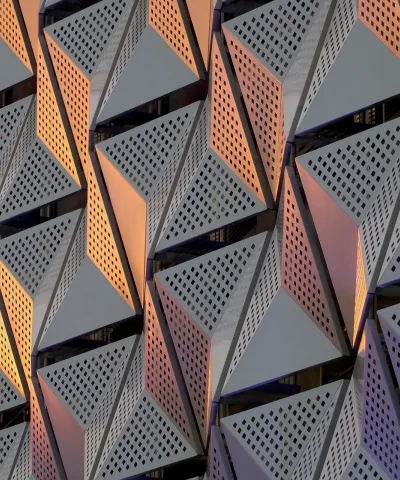For the past decade, technology and industrials companies have viewed digital through an “efficiency” lens. Now the resurgent crisis raises a litany of digital questions on the revenue side, too. But according to Brad Soper, Grigori Bokeria, and Adam Echter, you don’t need to wait years to see an effect on your top line. Rather, commercially creative measures can deliver an impact as early as a quarter or two from now. Read the interview to find out how!
Brad, Grigori, Adam, our recent paper on Commercial Creativity describes digital migration as one of the strongest forces in the demand revolution. Can you tell us, what impact digital migration has had on T&I companies?
Brad: The crisis has definitely accelerated several existing digital trends, one being the move toward a multi-channel go-to-market approach. Sales were already becoming somewhat digitalized along the customer journey, from information gathering to the decision-making and purchasing process. The crisis acted as an accelerator – with personal visits not possible, even traditional companies had to adjust their highly interactive and in-person selling models and to find new ways to serve their customers.
Read more from Brad Soper: Remote Selling in the Midst of COVID-19
Grigori: Business models in technology and industrials have traditionally been hardware-centric. But even prior to the crisis, data-driven product solutions were gradually coming into play, such as hardware plus data, services plus data, and software overlays. These extensions became increasingly relevant as the crisis pushed us deeper into the digital world. Think about the after sales business of a machinery company. During lockdown, a technician couldn’t just wander into a factory to maintain or upgrade a machine. Software solutions were an effective way to serve the customer remotely, and in doing so defined a faster, more efficient, and more convenient go-to-market model.
It sounds like technology and industrials companies have benefited from the efficiency of “remote”. What’s next?
Adam: The crisis is an opportunity to redirect digitalization efforts away from automation and cost efficiency and more toward testing, customer orientation, and value creation. Many T&I companies tend to think of digital as a product, looking at what they can design – usually creating an information-powered device. But when companies go down that road, they are looking at five to ten years until monetization and the ability to improve their top line.
Brad: If there is one thing that industrials companies know how to do, it’s how to make products and sell them one at a time. But extremely long innovation processes make achieving a strong return on investment a major challenge. The pitfall is that innovation is rarely considered in the sense of a new solution, the monetization model, or the willingness to pay.
Grigori: Commercially creative companies, on the other hand, look for ways to immediately have an impact – as early as a quarter or two from now. They hone in on the right customers, customer retention, customer engagement, churn reduction, and the overall customer experience side of the business, which can be truly impacted by digital. It is about shifting the digital mindset to “revenue-up” instead of “cost-down”
Adam: And in the age of the Internet of Things, it’s not just machines that need to be connected. An even more crucial connection is the one between a company and its customers. If you just sell a product and walk away, you're doing it wrong.
So how exactly can companies extract the true value of these new offerings?
Grigori: That’s a good question. How do you monetize the full value of a product or service without a huge price tag scaring customers away? This becomes even more important during a crisis, when cost increases and inflation put both industrials companies and their customers’ purchasing departments under pressure.
Read more from Grigori Bokeria: Price Inflation in Industrials
Brad: Shifting from a CapEx to an OpEx model can create a lot of opportunities as customers are more willing to pay smaller, more manageable fees over time. So creative companies are moving toward recurring revenue instead of one-time payments, at least for a portion of the offering. This is a trend driven by private equity firms, too. They value recurring models more than one-time fees because they drive customer loyalty, and in turn this drives a company’s valuation.
Grigori: Recurring revenue might not be applicable to all products and sectors – if you're selling paper, then you're selling paper. It is not that easy to change the revenue model if the price metric is price per ton. But if you're selling a device that supports factory automation linked to data or software features, then it is worthwhile rethinking the monetization approach.
Adam: Other things to consider include how many customers are inside your ecosystem? How are you cross- or up-selling and expanding your share of wallet? Are you meeting needs in different ways? These are all important questions that digitalization gives you the power to answer.
Check out our case study: A price model for the digital world
Are there any other areas within T&I where customers are now placing more value than they did prior to COVID-19?
Grigori: Like in many other industries, customers are increasingly paying attention to sustainability. This affects technology and industrials companies in three key areas:
- Ensuring an environmentally-friendly and sustainability-compliant supply chain
- Ensuring your own products have a good footprint, e.g. sustainable packaging
- Shifting target applications, e.g. from industries like oil and gas, where demand and investments are decreasing, to sectors like recycling technologies, water treatment, and emobility, which are receiving new funding and are supported by government incentives.
Brad: Sustainability also presents the key challenge of figuring out how to monetize on green. There is a social movement toward sustainability. But when companies are purchasing are they willing to pay an extra 10 cents a ton for something? Our recent logistics study on sustainability and willingness to pay revealed the reality: the majority intermediate purchasers of goods are not. T&I companies need to think hard about how they market and monetize these sustainable services effectively, finding a way to bridge the gap between how businesses operate their global supply chains and what the end consumers actually want.
Finally, what might an industrials commercial creativity project with Simon-Kucher look like?
Grigori: The investment volume in R&D for machinery, electronics, and industrial companies has been increasing every year for the last decade. The seeds for new products were sown several years ago – now is the time for these innovations to enter the game. But companies need guidance on the right monetization strategy.
Brad: We are helping companies determine the right price model and go-to-market approach. We’re advising them on how be more dynamic rather than static, orienting the commercial organization toward volatile developments, and translating these developments into commercial measures.
Adam: It’s also about helping companies see the potential beyond just a product. A machine equipped with sensors is not just a machine equipped with sensors. It is a window to view customer behavior, understand needs, and gain insights on how to create winning products and experiences. That’s where Simon-Kucher comes in.
Looking for creative crisis solutions? Reach out to Adam Echter, Brad Soper, or Grigori Bokeria today to find out!









